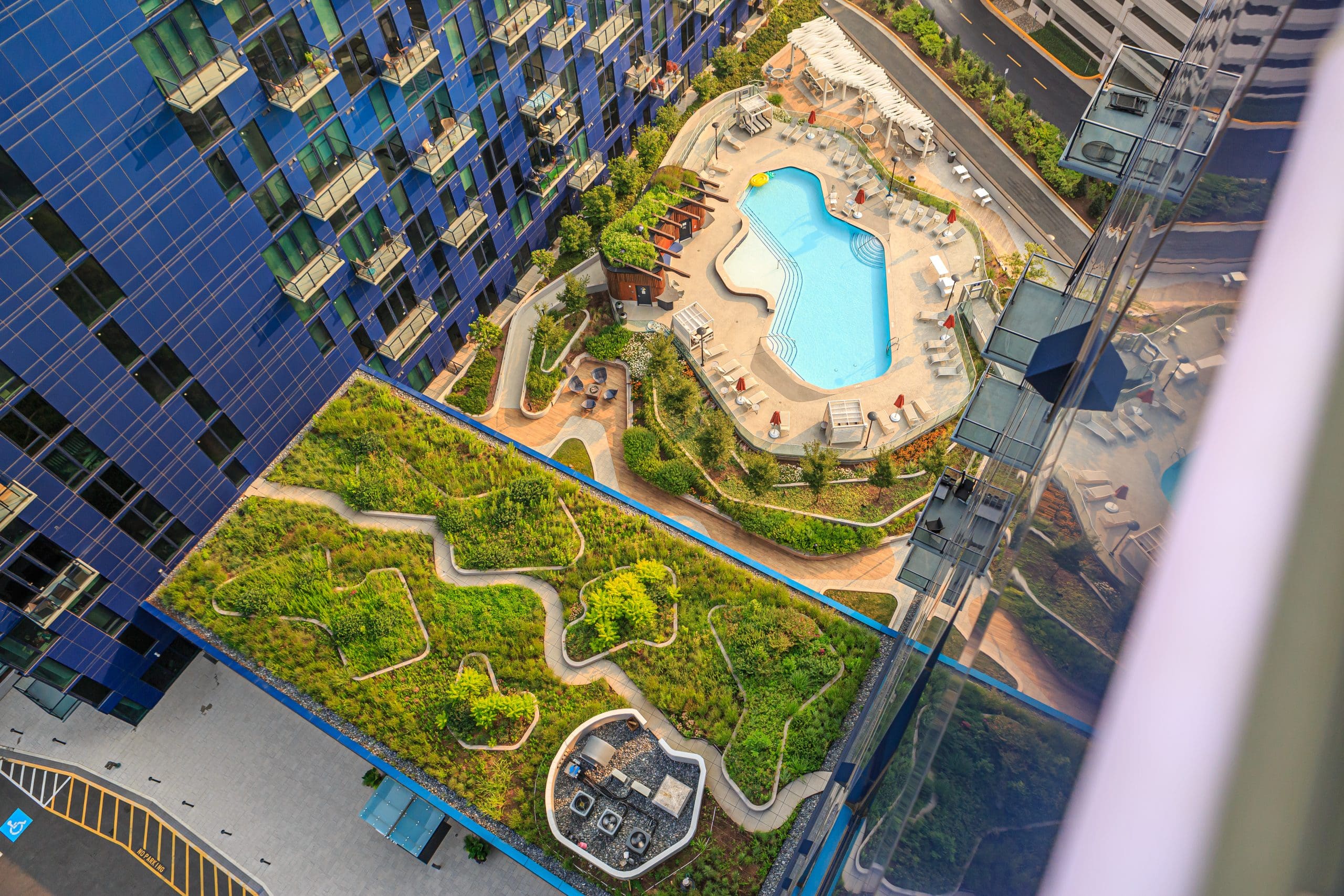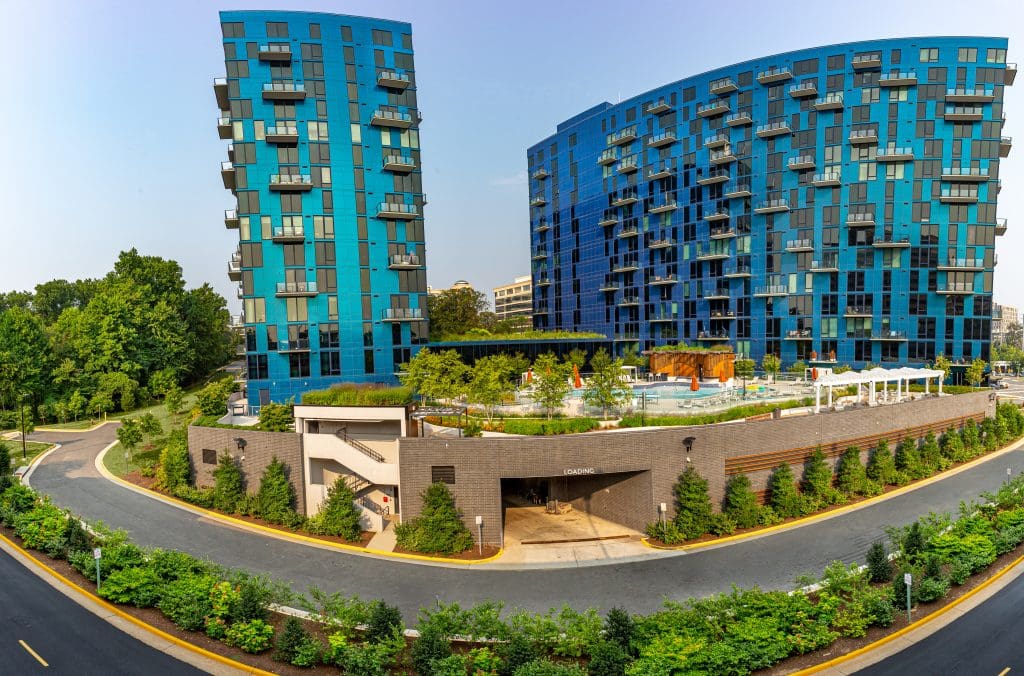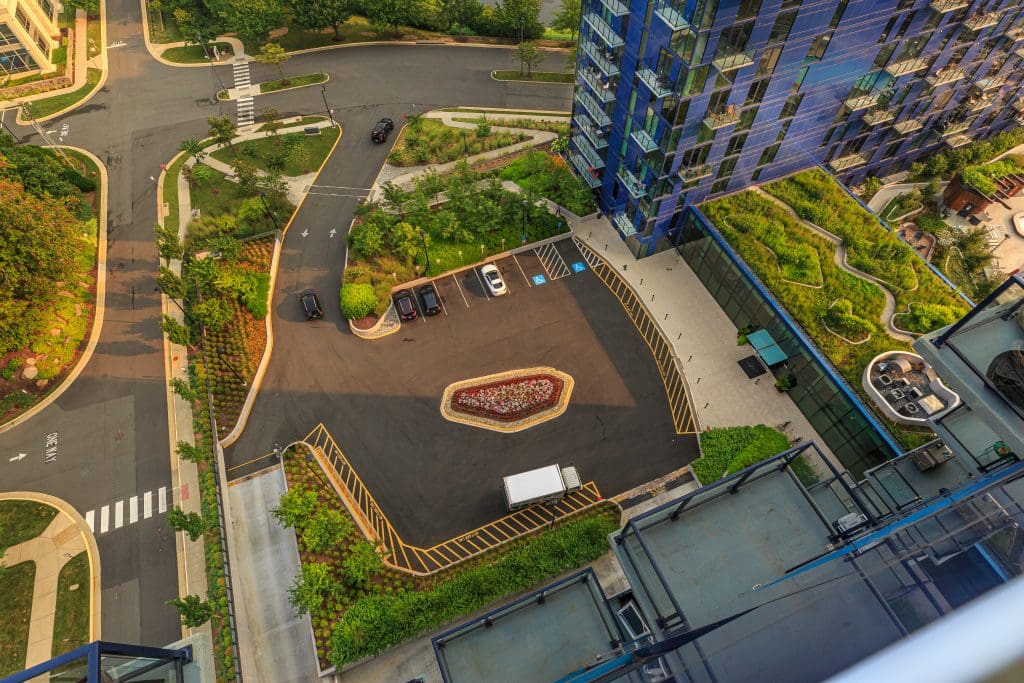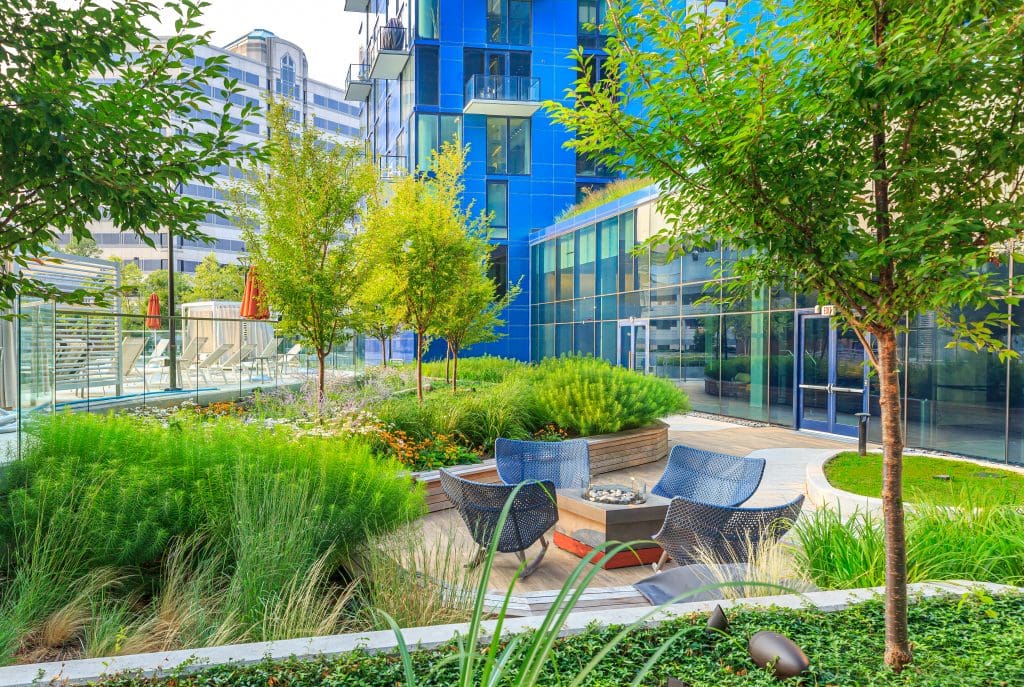
The EXO at Excelsior Parc is a 16-story residential development located in Reston, Virginia, that includes 457 apartments accompanied by 646 parking spaces. The project intended to provide residents with a well-appointed oasis amidst the lively urban environment Reston presents.

Ruppert Landscape, based in Laytonsville, Maryland, was employed to take on this project. The project required the installation of numerous elements, ranging from plants to concrete flatwork and irrigation systems. The outcome of this project earned Ruppert Landscape a Gold Award in the 2021 Awards of Excellence.
Most of the project was over-structure, limiting access and heavy equipment use; considerable focus on soil composition was also necessary.
“Additionally, the back side of the project was built into a hillside; so, the project has an upward trajectory from front to back, compounding the over-structure issue with regard to material delivery and requiring focus on grade changes,” says Amy Snyder, director of public relations at Ruppert Landscaping.
To achieve the project’s goal of a lush landscape, 10,500 perennials and grasses, along with 2,900 shrubs, and 270 trees were installed to create a vibrant landscape that contributed to the oasis setting.

A semi-intensive green roof was installed featuring perennials, small shrubs, and ornamental grasses that acted as a stormwater filter and a habitat for wildlife. Additional sustainability measures were taken, including the installation of native plant material, material sourcing from local vendors, the establishment of 14,000 LF of filter fabric, and over 6,000 SF of grass pavers.
All deliveries were done at ground level and moved through the building’s interior. The deliveries were then transferred with the help of pallet jackets, Georgia buggies, wheelbarrows, and skid steers.
Access challenges were solved by using a tower crane, which lifted materials to the rooftop. A pressurized blower truck with a hopper and four-inch pipe was used to enable the disbursement of a lightweight soil mix into the courtyards.
Soil scientists continuously analyzed the particle percentages to ensure they were sufficiently permeable in certain areas to penetrate or induce stormwater runoff. In other areas, the percentages were measured to make sure there was appropriate moisture retention to support vegetation. Testing was done to check the appropriate minerals, organic content, drainage, particle size, volume of topsoil, compost, and fine sand.
A lot of focus went to constructing accurate grade elevations, which consisted of polystyrene foam layers; a hot, knife wire tool was created to carve definitive shapes from the foam cubes.

Project execution dealt with some difficulties such as installing intricate designs, weather issues, and schedule complications. Over 22,000 SF of pavers were installed on-site, consisting of multiple types including concrete, porcelain, and pedestal, as well as many patterns and colors. The patterns were cut with a concrete saw and then refined with grinding tools to enhance the design; this tripled the time that is typically spent cutting straight hardscape.
During project construction, Virginia experienced over 70 inches of rainfall; this led to the waterproofer being unable to complete the over-structure sections, creating a domino effect on other areas of installation.
When the concrete was being poured between the months of February and March, heat blankets were necessary to ensure proper curing due to the low temperatures. Once the weather got warmer, additional issues occurred when planting the job’s 270 trees.

“While the irrigation system was in, we were working hard to ensure the trees wouldn’t suffer summer heat stress,” Snyder says. “To combat this, we installed gator bags on some trees and had two dedicated crew members watering the site’s plant material every day for two months.”
Schedule compression caused a major issue, leading to crew members having to work overtime and on the weekends for the project to be completed on time.
“As the space crunch increased, we proposed a solution to the GC to keep the project on schedule,” Snyder says. “We divided the project into three smaller fast track projects that were done on weekends (deck, green roof, streetscape).”
This solution allowed for a smaller crew to be onsite during the week for prep work. 25 crew members worked over the weekend, completing larger portions to free up space for contractors to work during the week, allowing for effective completion with no interferences.
Interested in participating in the Awards of Excellence? Be sure to enter your projects by July 11, 2022.

